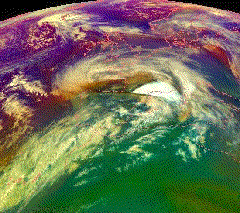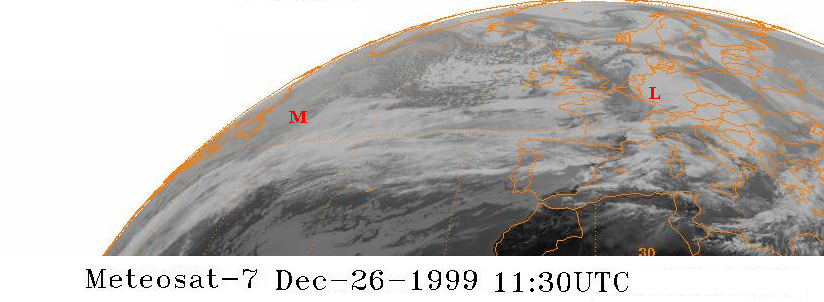|
List Of Storms Named Martin
The name Martin has been used for four tropical cyclones worldwide: For one storm in the Atlantic Ocean, two in the South Pacific Ocean and for one extratropical European windstorm. In the Atlantic: * Hurricane Martin (2022) – large but short-lived Category 1 hurricane that churned in the open North Atlantic. In the South Pacific: * Cyclone Martin (1986) – weak tropical cyclone had only minor effects on land. * Cyclone Martin (1997) – damaging and deadly Category 3 tropical cyclone that affected the Cook Islands and French Polynesia. The WMO retired the name ''Martin'' from use in the South Pacific basin following the 1997–98 cyclone season. In Europe: * Cyclone Martin (1999) – caused devastating damage in southern France in late December 1999, killing 30 people. See also * List of storms named Marty The name Marty has been used for eight tropical cyclones, seven in the Eastern Pacific Ocean and one in the Western Pacific Ocean. In the Eastern Pacific: * Hurricane Mar ... [...More Info...] [...Related Items...] OR: [Wikipedia] [Google] [Baidu] |
Tropical Cyclone
A tropical cyclone is a rapidly rotating storm system characterized by a low-pressure center, a closed low-level atmospheric circulation, strong winds, and a spiral arrangement of thunderstorms that produce heavy rain and squalls. Depending on its location and strength, a tropical cyclone is referred to by different names, including hurricane (), typhoon (), tropical storm, cyclonic storm, tropical depression, or simply cyclone. A hurricane is a strong tropical cyclone that occurs in the Atlantic Ocean or northeastern Pacific Ocean, and a typhoon occurs in the northwestern Pacific Ocean. In the Indian Ocean, South Pacific, or (rarely) South Atlantic, comparable storms are referred to simply as "tropical cyclones", and such storms in the Indian Ocean can also be called "severe cyclonic storms". "Tropical" refers to the geographical origin of these systems, which form almost exclusively over tropical seas. "Cyclone" refers to their winds moving in a circle, whirling round ... [...More Info...] [...Related Items...] OR: [Wikipedia] [Google] [Baidu] |
European Windstorm
European windstorms are powerful extratropical cyclones which form as cyclonic windstorms associated with areas of low atmospheric pressure. They can occur throughout the year, but are most frequent between October and March, with peak intensity in the winter months. Deep areas of low pressure are common over the North Atlantic, and occasionally start as nor'easters off the New England coast. They frequently track across the North Atlantic Ocean towards the north of Scotland and into the Norwegian Sea, which generally minimizes the impact to inland areas; however, if the track is further south, it may cause adverse weather conditions across Central Europe, Northern Europe and especially Western Europe. The countries most commonly affected include the United Kingdom, Ireland, the Netherlands, Norway, Germany, the Faroe Islands and Iceland. The strong wind phenomena intrinsic to European windstorms, that give rise to "damage footprints" at the surface, can be placed into three cat ... [...More Info...] [...Related Items...] OR: [Wikipedia] [Google] [Baidu] |
Hurricane Martin (2022)
The 2022 Atlantic hurricane season was the first season since 1997 in which no tropical cyclones formed in August, and the first season on record to do so during a La Niña year. It was a fairly average hurricane season with an average number of named storms, a slightly above-average number of hurricanes, a slightly below-average number of major hurricanes (category 3 or higher on the 5-level Saffir–Simpson wind speed scale), and a near-normal accumulated cyclone energy (ACE) index. Despite this, it became one of the costliest Atlantic hurricane seasons on record. There were fourteen named storms during the season. Eight of them strengthened into a hurricane, and two reached major hurricane intensity. The season officially began on June 1, and ended on November 30. These dates, adopted by convention, historically describe the period in each year when most subtropical or tropical cyclogenesis occurs in the Atlantic Ocean. This year's first named storm, Tropical Sto ... [...More Info...] [...Related Items...] OR: [Wikipedia] [Google] [Baidu] |
Cyclone Martin (1986)
The name Martin has been used for four tropical cyclones worldwide: For one storm in the Atlantic Ocean, two in the South Pacific Ocean and for one extratropical European windstorm. In the Atlantic: * Hurricane Martin (2022) – large but short-lived Category 1 hurricane that churned in the open North Atlantic. In the South Pacific: * Cyclone Martin (1986) – weak tropical cyclone had only minor effects on land. * Cyclone Martin (1997) – damaging and deadly Category 3 tropical cyclone that affected the Cook Islands and French Polynesia. The WMO retired the name ''Martin'' from use in the South Pacific basin following the 1997–98 cyclone season. In Europe: * Cyclone Martin (1999) – caused devastating damage in southern France in late December 1999, killing 30 people. See also * List of storms named Marty The name Marty has been used for eight tropical cyclones, seven in the Eastern Pacific Ocean and one in the Western Pacific Ocean. In the Eastern Pacific: * Hurricane Mar ... [...More Info...] [...Related Items...] OR: [Wikipedia] [Google] [Baidu] |
Cyclone Martin (1997)
Severe Tropical Cyclone Martin was the deadliest tropical cyclone of the 1997–98 South Pacific cyclone season. The system was first noted as a weak tropical disturbance on October 27, to the north of the Northern Cook Islands. Over the next few days atmospheric convection surrounding the system remained disorganized, as it moved towards the southwest and was affected by strong upper-level north-easterly winds and moderate to strong vertical wind shear. The system was subsequently named Martin during October 31, after it had rapidly developed further and shown a marked improvement organization. Meteorological history During October 27, the Fiji Meteorological Service (FMS) started to monitor a weak tropical disturbance, that had developed to the north of the Northern Cook Islands. At this stage, the systems weak low-level circulation was moving to the west-southwest, while atmospheric convection surrounding the disturbance was unorganized and being impacted by strong upper-leve ... [...More Info...] [...Related Items...] OR: [Wikipedia] [Google] [Baidu] |
Cyclone Martin (1999)
Cyclone Martin was an extremely violent European windstorm which crossed southern Europe on 27–28 December 1999, causing severe damage across France, Spain, Switzerland and Italy one day after Cyclone Lothar had affected similar areas. Wind speeds reached around in French department of Charente-Maritime. The storm caused 30 fatalities and €6 billion in damages. Combined with Lothar, Cyclone Martin is often referred to as the ''Storm of the Century'' in western and central Europe. Meteorological history December 1999 saw a series of heavy winter storms cross the North Atlantic and western Europe. In early December, Great Britain and Denmark were hit by Cyclone Anatol which caused severe damage in Denmark. A second storm then crossed Europe on 12 December. A very deep and sizeable depression, named ''Cyclone Kurt'', moved across Britain on the night of 24–25 December, analysed to have possibly reached a low of 938 mb between Scotland and Norway ... [...More Info...] [...Related Items...] OR: [Wikipedia] [Google] [Baidu] |
List Of Storms Named Marty
The name Marty has been used for eight tropical cyclones, seven in the Eastern Pacific Ocean and one in the Western Pacific Ocean. In the Eastern Pacific: * Hurricane Marty (1985) – no effect on land * Hurricane Marty (1991) – briefly threatened the Mexican coastline * Tropical Storm Marty (1997) – not a threat to land * Hurricane Marty (2003) – made two landfalls on the Baja California peninsula * Tropical Storm Marty (2009) – never affected land * Hurricane Marty (2015) – affected southwestern Mexico * Tropical Storm Marty (2021) – had no effect on land; formed from the remnants of Atlantic basin Hurricane Grace In the Western Pacific: * Tropical Storm Marty (1996) – a minimal storm that killed 125 in Vietnam See also * List of storms named Martin The name Martin has been used for four tropical cyclones worldwide: For one storm in the Atlantic Ocean, two in the South Pacific Ocean and for one extratropical European windstorm. In the Atlantic: * Hurricane Marti ... [...More Info...] [...Related Items...] OR: [Wikipedia] [Google] [Baidu] |
Atlantic Hurricane Set Index Articles
The Atlantic Ocean is the second-largest of the world's five oceans, with an area of about . It covers approximately 20% of Earth's surface and about 29% of its water surface area. It is known to separate the "Old World" of Africa, Europe and Asia from the "New World" of the Americas in the European perception of the World. The Atlantic Ocean occupies an elongated, S-shaped basin extending longitudinally between Europe and Africa to the east, and North and South America to the west. As one component of the interconnected World Ocean, it is connected in the north to the Arctic Ocean, to the Pacific Ocean in the southwest, the Indian Ocean in the southeast, and the Southern Ocean in the south (other definitions describe the Atlantic as extending southward to Antarctica). The Atlantic Ocean is divided in two parts, by the Equatorial Counter Current, with the North(ern) Atlantic Ocean and the South(ern) Atlantic Ocean split at about 8°N. Scientific explorations of the Atlantic ... [...More Info...] [...Related Items...] OR: [Wikipedia] [Google] [Baidu] |



